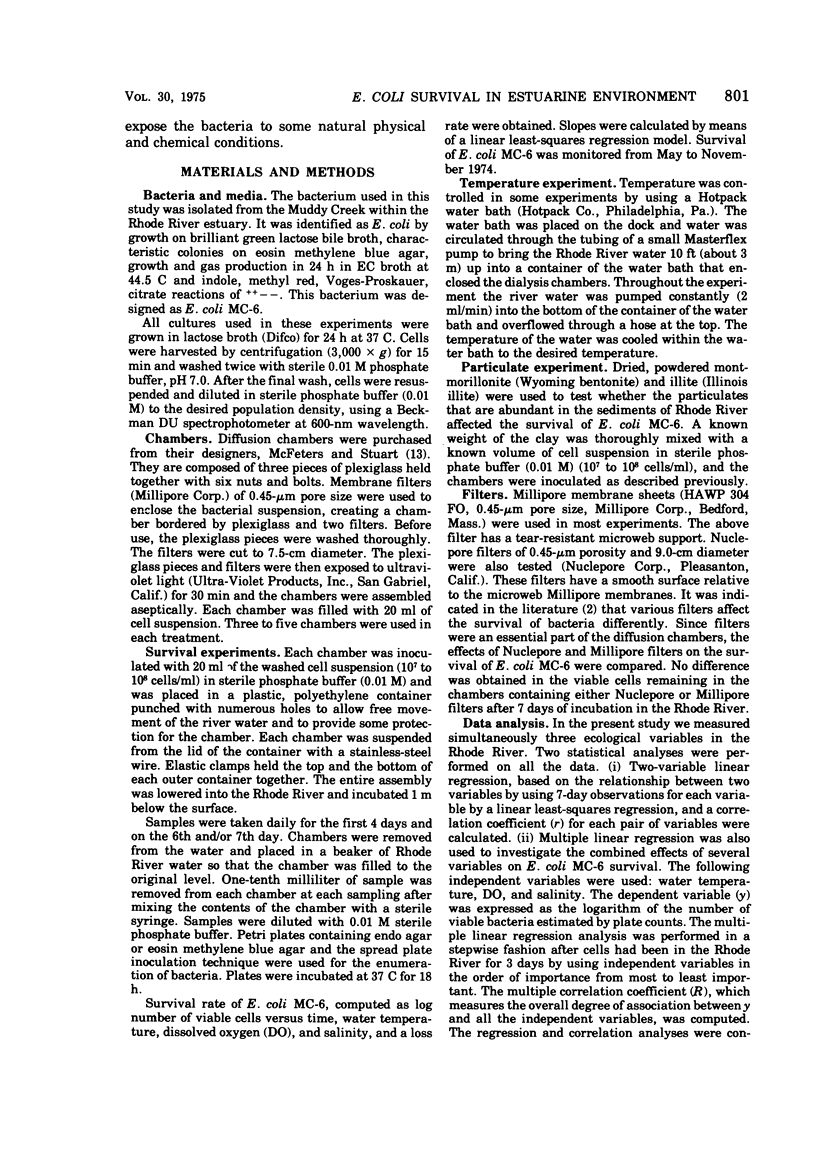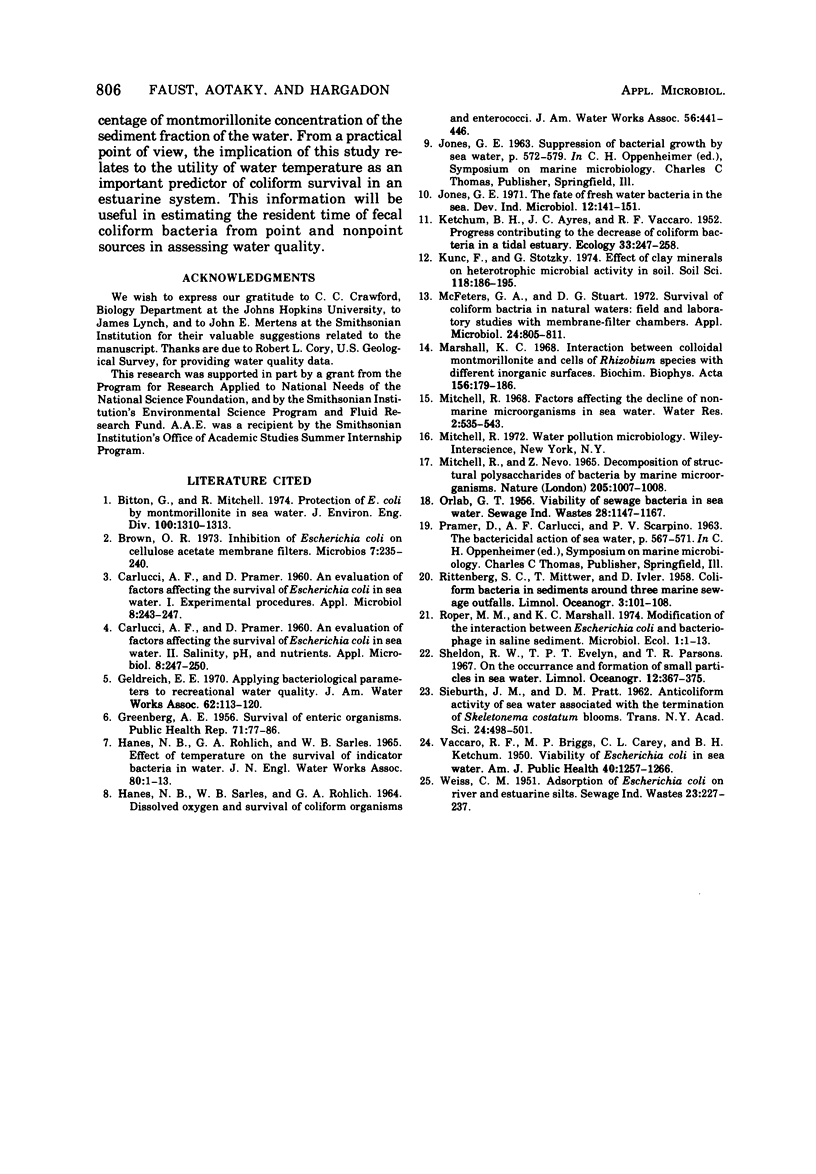Abstract
Survival of Escherichia coli MC-6 of fecal origin in an estuarine environment as affected by time, water temperature, dissolved oxygen, salinity, and montmorillonite in diffusion chambers has been elucidated. Several in situ physical parameters were recorded simultaneously, and viable cell numbers were estimated. The survival of the bacteria varied seasonally. Montmorillonite addition extended the time needed for a 50% reduction of the viable cell population (t½) of cells by 40% over the t½ of cells in Rhode River water alone. The effect of this clay was not significantly greater between 50- to 1,000-μg/ml montmorillonite concentrations. In all experiments, the relationships among pairs of variables were studied by regression and correlation analysis. The slope between viable cell numbers and water temperatures increased about 50% for each 10 C increment in temperature and gave a correlation coefficient r = 0.617, significant at 95% confidence level. A similar correlation coefficient, r = 0.670, was obtained between water temperature and t½ of the initial cell population. In all experiments regressions were performed considering all variables after bacteria had been in the Rhode River environment for 3 days. Coefficient of multiple determinaton was estimated as R2 = 0.756. Approximately 75.6% of the variance of viable cell numbers can be explained by variation in water temperature, dissolved oxygen, and salinity. Simple correlation coefficients within the regression steps were also computed. Survival of bacteria was closely and negatively correlated with increasing water temperature (r = -0.717). It is suggested that water temperature is the most important factor in predicting fecal coliform survival from point and nonpoint sources in assessing water quality in an estuarine ecosystem.
Full text
PDF






Selected References
These references are in PubMed. This may not be the complete list of references from this article.
- Brown O. R. Inhibition of Escherichia coli on cellulose acetate membrane filters. Microbios. 1973 Apr-May;7(28):235–240. [PubMed] [Google Scholar]
- CARLUCCI A. F., PRAMER D. An evaluation of factors affecting the survival of Escherichia coli in sea water. I. Experimental procedures. Appl Microbiol. 1960 Jul;8:243–247. doi: 10.1128/am.8.4.243-247.1960. [DOI] [PMC free article] [PubMed] [Google Scholar]
- CARLUCCI A. F., PRAMER D. An evaluation of factors affecting the survival of Escherichia coli in sea water. II. Salinity, pH, and nutrients. Appl Microbiol. 1960 Jul;8:247–250. doi: 10.1128/am.8.4.247-250.1960. [DOI] [PMC free article] [PubMed] [Google Scholar]
- GREENBERG A. E. Survival of enteric organisms in sea water. Public Health Rep. 1956 Jan;71(1):77–86. [PMC free article] [PubMed] [Google Scholar]
- Marshall K. C. Interaction between colloidal montmorillonite and cells of Rhizobium species with different inogenic surfaces. Biochim Biophys Acta. 1968 Feb 1;156(1):179–186. doi: 10.1016/0304-4165(68)90117-7. [DOI] [PubMed] [Google Scholar]
- McFeters G. A., Stuart D. G. Survival of coliform bacteria in natural waters: field and laboratory studies with membrane-filter chambers. Appl Microbiol. 1972 Nov;24(5):805–811. doi: 10.1128/am.24.5.805-811.1972. [DOI] [PMC free article] [PubMed] [Google Scholar]
- SIEBURTH J. M., PRAT D. M. Anticoliform activity of sea water associated with the termination of Skeletonema costatum blooms. Trans N Y Acad Sci. 1962 Mar;24:498–501. doi: 10.1111/j.2164-0947.1962.tb01425.x. [DOI] [PubMed] [Google Scholar]
- VACCARO R. F., BRIGGS M. P., CAREY C. L., KETCHUM B. H. Viability of Escherichia coli in sea water. Am J Public Health Nations Health. 1950 Oct;40(10):1257–1266. doi: 10.2105/ajph.40.10.1257. [DOI] [PMC free article] [PubMed] [Google Scholar]


